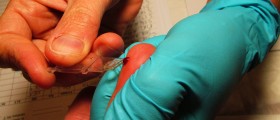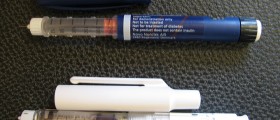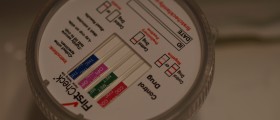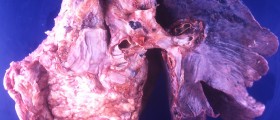Venipuncture
Venipuncture is a surgical puncture of a vein especially for the withdrawal of blood or for intravenous medication, and most commonly for laboratory examination of blood.
How is the Test Done?
Most typically the interior side of the elbow or the back side of the hand are chosen to be punctured. A germicidal substance is used to disinfect the skin. The technician puts a stretchy band around the patient’s upper arm with the aim of providing pressure in the tissue zone and in order to induce swelling in the veins.
After that is done, a needle is slowly slipped into the blood vessel by the technician. Connected to the needle is a hermetically sealed vial that collects blood, and as soon as the vial fills the technician unfastens the tourniquet.
After gathering the needed amount of blood, the technician removes the needle and the punctured skin is secured with a sterile piece of e.g. gauze to prevent the spot from bleeding.
How Does One Get Ready for Testing?
The procedure of preparation varies, depending on the type of testing that is to be done. In some cases, you will not have to prepare at all. In other cases, you will be instructed not to take in food or beverages of any sort e.g. twelve hours before the collection of the blood sample. If in doubt, make sure to consult with your physician.
Why Does One Test Their Blood?
Blood testing is very beneficial since your physician may deduce different clues about the state of your health from the results of testing. What we call 'normal' results vary from test to test, which is also true of the 'abnormal' results.
What Can Go Wrong?
While venipuncture is known to be a rather risk-free procedure, there is some chance for the occurrence of complications. Studies have been conducted, researching whether and which complications may occur. Among the most common minor complications are bruises and hematoma in the place of skin puncture. Among the serious ones are cellulitis, phlebitis, near syncope, syncope, and ictus.
- We planned to include all the studies dealing with “venipuncture and complications” and “venipuncture and adverse events.” We excluded all the studies, which did not properly fit our research question, and with insufficient data.
- Of the 2345 records found, after removing of duplicates, and after records excluded in title and abstract, 173 matched our inclusion criteria. After reading the full-text articles, we decided to exclude 144 articles because not responding properly to our research questions or due to insufficient data.
- The final set included 29 articles.
In conclusion, this type of procedure certainly bears some risks, regardless of the amount of blood that has been taken from the patient. The technicians are trained and expect different sorts of reactions to the procedure, and they can quickly resolve any difficulties a patient may experience, such as fainting.
If a person cannot endure the venipuncture, they always have the option of resorting to the procedure called fingerpick, in which the blood sample is obtained by puncturing the skin of a finger.






_f_280x120.jpg)











Your thoughts on this
Loading...